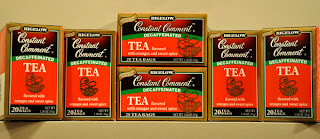Deciphering a CAPTCHA

Not familiar with CAPTCHAs? Even if you don't know the name, I'm sure you recognize them by sight. A CAPTCHA is a skewed or squished word, sometimes with embedded numbers or even a line drawn across the middle. I thought I had this one down pat. Turns out the image to the right wasn't an ad I could ignore; that photo's embedded 39 was a critical part of my CAPTCHA. D'oh! I understand why CAPTCHAs exist: to help computers tell us humans apart from automated evil (a.k.a. spammers or spambots). These tests are important to filter out the monsoon of Viagra and mortgage auto-posts that would otherwise flood blogs and websites. What bothers me is when CAPTCHAs screen me out. I stare intently, but can't figure out the right term. I tilt my head, lean in closer to my monitor and eventually hit the refresh button (circular arrow) to request an alternate CAPTCHA, preferably on that's easier to read. Sadly, th...







